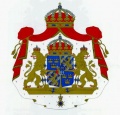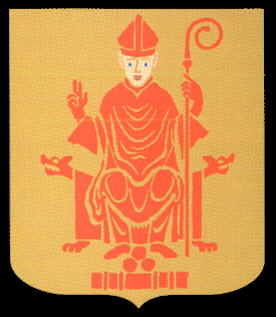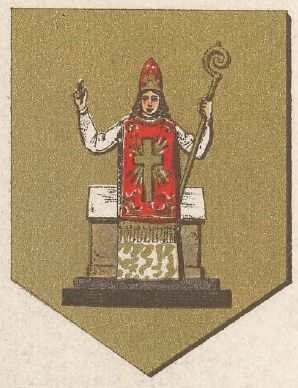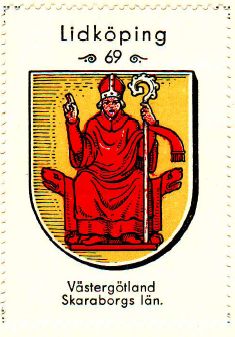Lidköping
Sweden heraldry portal
This page is part of the Sweden heraldry portal |
Heraldry of the World |
|
Civic heraldry:
|
Other heraldry: |
LIDKÖPING
Province (Landskap): Västergötland
County (Län): Västra Götalands län
Additions : 1969 Järpås (1952 Häggesled, Uvered), Kållands-Råda (1952 Kållands-Åsaka, Mellby, Råda), Norra Kålland (1952 Gösslunda, Otterstad, Rackeby, Skalunda, Strö, Sunnersberg), Saleby (1952 Härjevad, Trässberg), Tun (1952 Friel, Karaby), Vinninga (1952 Hasslösa, Hovby, Lindärva, Norra Härene, Sävare), Örslösa (1952 Gillstad, Lavad, Norra Kedum, Söne, Tranum, Tådene, Väla)
| Swedish |
I fält av guld en naturfärgad biskop med röd klädnad och röda handskar, sittande på en röd stol med högra handen välsignande uppsträckt och med en röd kräkla i vänstra handen samt i stammen åtföljd av tre (1,2) på en röd bok liggande kulor. Origin/meaningThe arms were granted on February 16, 1945. Lidköping became a city in 1446. The oldest seal probably dates from the same time, but is not known prior to 1505. It shows a bishop on a throne. It is, however, not known who the bishop symbolises. It may be the local bishop at the time, or the patron saint of the church, St. Nicholas. Later seals also simply show the letter L, with or without the bishop. In 1945 it was decided not to add the L in the new arms. Instead it was decided that the bishop was shown as St. Nicholas, so in the base a book and three coins were added. The coins are a symbol for one of St. Nicholas holy miracles, in which he saved the life of three children using golden coins.
Contact and SupportPartners: Your logo here ? © 1995-2025, Heraldry of the World, Ralf Hartemink Literature : Nevéus and de Waern, 1992 |














